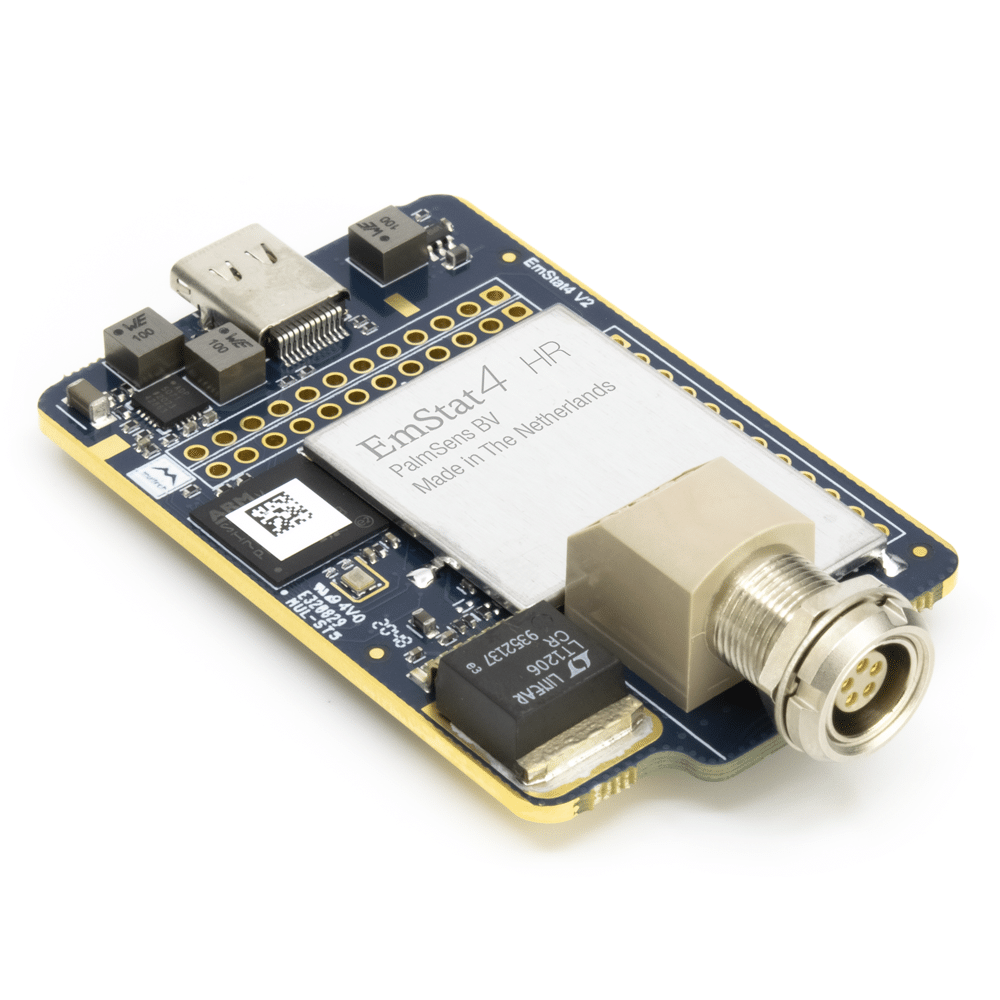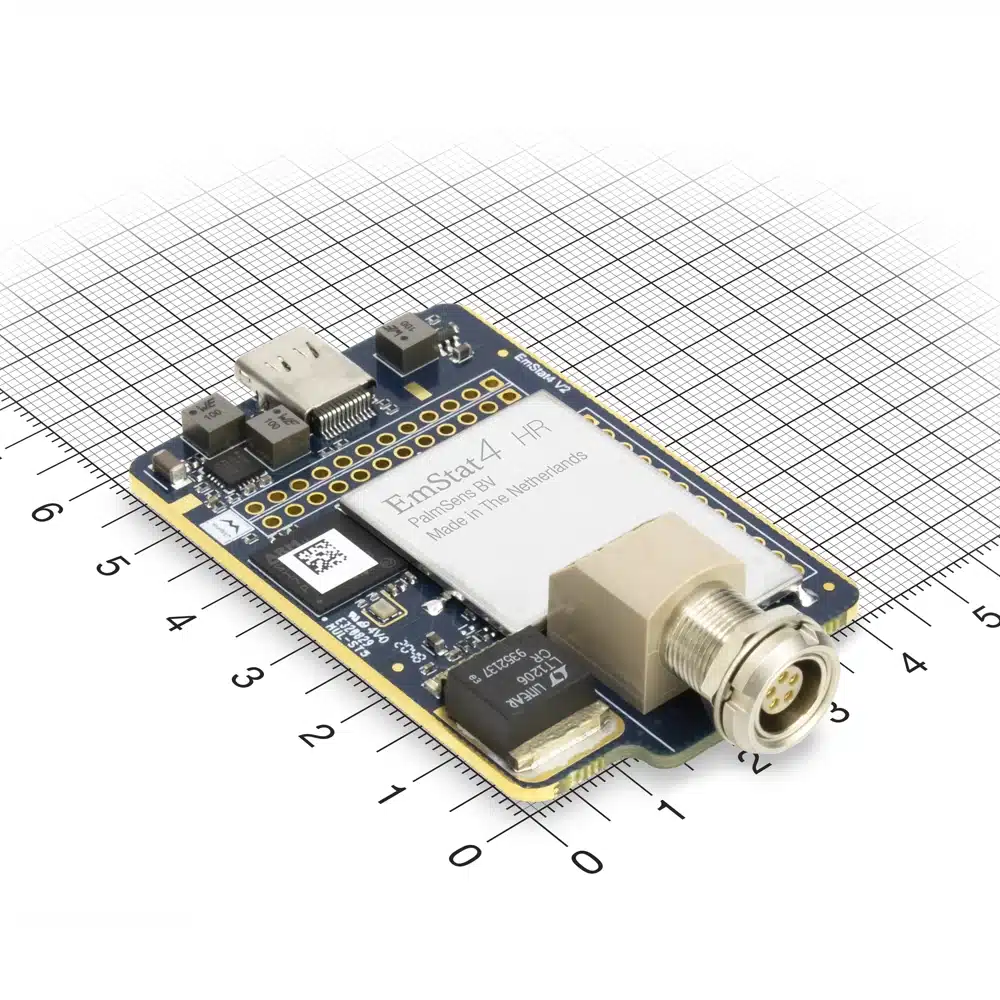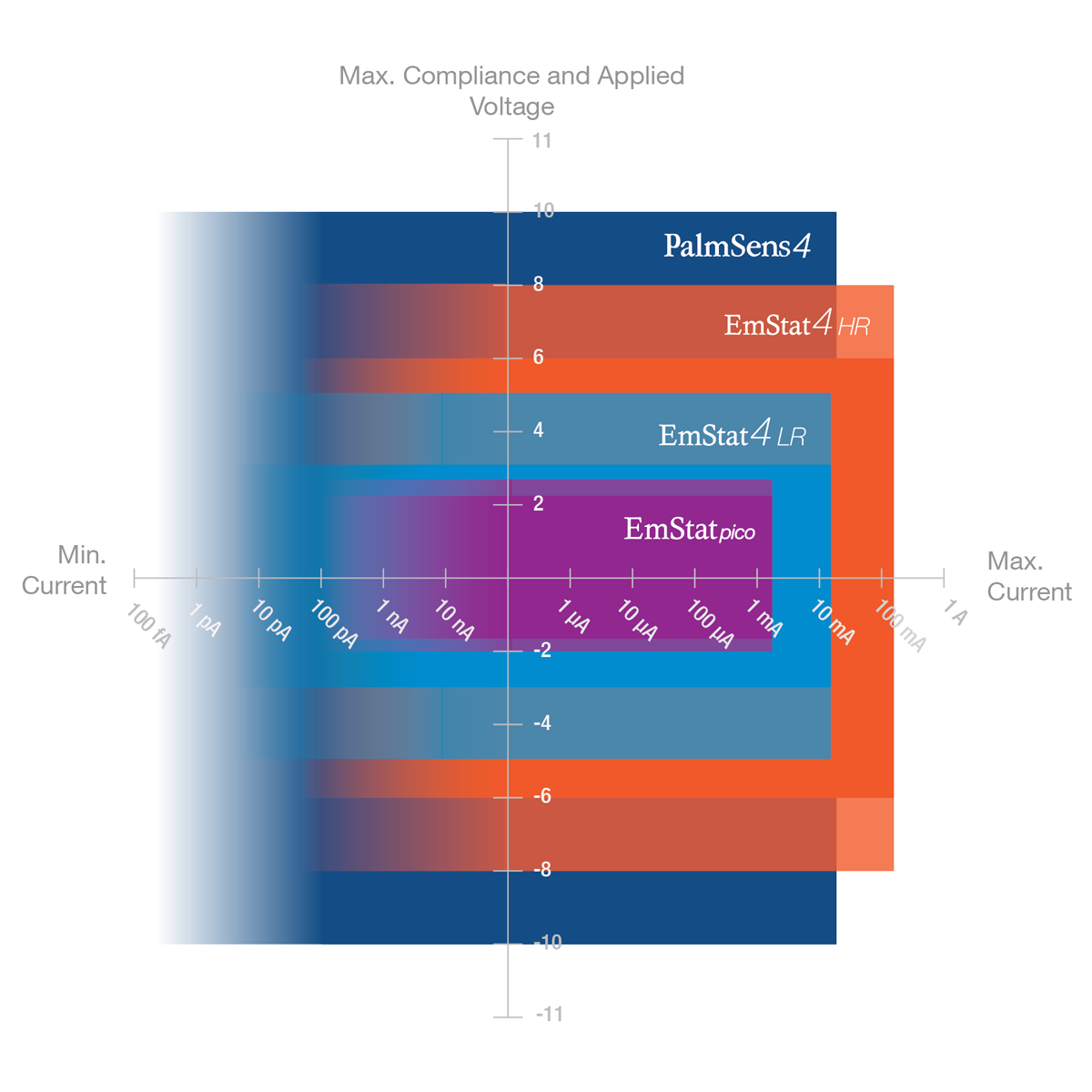EmStat4M Module
Tested & calibrated potentiostat module
- Desktop performance in the palm of your hand
- Enables rapid prototyping
- Easy to reproduce measurements using MethodSCRIPT™
- Many code examples for different languages and platforms
Description
The EmStat4M is a potentiostat/galvanostat module supporting all common electrochemical techniques, including Electrochemical Impedance Spectroscopy (EIS). The EmStat4M can be evaluated with our PSTrace software for Windows. You can write your own applications for the EmStat4M module using our .NET libraries or MethodSCRIPT™ and control it from any platform or operating system.
Versions
The EmStat4M comes in two different versions:
- Low Range (LR): current range from 1 nA to 10 mA (max. 30 mA)
- High Range (HR): current ranges from 100 nA to 100 mA (max. 200 mA)
Both versions can be configured with optional EIS/FRA with a maximum frequency of 200 kHz.
See specifications for more information.
Onboard storage
![]() Every EmStat4M is equipped with an internal storage of 500 MB, equivalent to 15 million data points.
Every EmStat4M is equipped with an internal storage of 500 MB, equivalent to 15 million data points.
This means all your measurements can automatically be saved onboard as a backup.
Start developing with the EmStat4M
The EmStat4M module can be ordered as a bare module or as part of a kit. We offer a Starter Kit and Development Kit as well. The Starter Kit includes a sensor cable, software, and more. The Development Kit comes with the EmStat4M module mounted on a development board. The development board features a Bluetooth module, Li-Ion battery charging, and options for making external connections to an Arduino for example. See the table below for an overview of what is included in both kits.
| Module only | Starter Kit | Development Kit | |
| EmStat4M LR or HR module | |||
| Development Board | – | – | |
| USB-C cable | – | ||
| USB-C splitter cable for extra power (EmStat4M HR only) | – | ||
| Sensor cable (1 meter with 2 mm pins) | – | ||
| 4 or 5 croc clips | – | ||
| Dummy Cell | – | ||
| PSTrace software for Windows (on USB drive) | – | ||
| Quick Start document | – | ||
| Calibration report | – |
Techniques
Voltammetric techniques
- Linear Sweep Voltammetry (LSV)
- Cyclic Voltammetry (CV)
- Fast cyclic Voltammery (FCV)*
- AC Voltammetry (ACV)*
Amperometric techniques
- Chronoamperometry (CA)
- Zero Resistance Amperometry (ZRA)
- Chronocoulometry (CC)
- MultiStep Amperometry (MA)
- Fast Amperometry (FAM)*
- Pulsed Amperometric Detection (PAD)
- Multiple-Pulse Amperometric Detection (MPAD)*
Galvanostatic techniques
- Linear Sweep Potentiometry (LSP)
- Chronopotentiometry (CP)
- MultiStep Potentiometry (MP)
- Open Circuit Potentiometry (OCP)
- Stripping Chronopotentiometry (SCP or PSA)*
Pulsed techniques
- Differential Pulse Voltammetry (DPV)
- Square Wave Voltammetry (SWV)
- Normal Pulse Voltammetry (NPV)
Other
- Mixed Mode (MM)
- Potentiostatic/Galvanostatic Impedance spectroscopy (EIS / GEIS)
- Potential scan or current scan
- Fixed potential or fixed current
- Time scan
Specifications
The EmStat4M is available in two versions: LR (Low Range) and HR (High Range).
| Main differences between the EmStat4M Low and High Range | ||
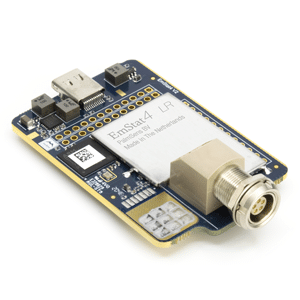 |
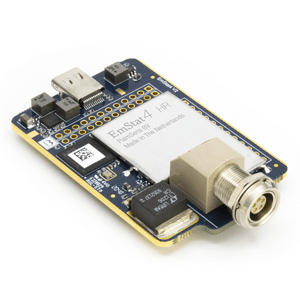 |
|
 |
||
| Potential range | ±3 V | ±6 V |
|---|---|---|
| Max. compliance voltage
The compliance voltage is the maximum voltage that can be applied between the working and counter electrode. Another name could be the maximum cell potential. Continue reading
|
±5 V | ±8 V |
| Current ranges | 1 nA to 10 mA (8 ranges) | 100 nA to 100 mA (7 ranges) |
| Max. current | ±30 mA | ±200 mA |
| Electrode connections | WE, RE, CE, and ground | WE, RE, CE, Sense, and ground |
| General | ||
|---|---|---|
| LR | HR | |
dc-potential range
The maximum potential difference, that can be applied between WE and RE.
|
±3 V | ±6 V |
compliance voltage
The compliance voltage is the maximum voltage that can be applied between the working and counter electrode. Another name could be the maximum cell potential. Continue reading
|
±5 V | ±8 V |
| maximum current | ±30 mA | ±200 mA |
| max. data acquisition rate | 1 000 000 samples /s | |
| Potentiostat | ||
|---|---|---|
| LR | HR | |
| applied potential resolution | 100 µV | 183 µV |
applied potential accuracy
The applied potential accuracy describes how close to the real values your applied potential is.
|
≤ 0.2% ±1 mV offset |
|
current ranges
A potentiostat measures current. For optimal precision, the range between which currents are measured is split into multiple current ranges. A current range defines the maximum current a potentiostat can measure in a certain range. This means it will also determine the resolution, because the number of bits or rather states is fixed, while the current range is variable.
|
1 nA to 10 mA 8 ranges |
100 nA to 100 mA 7 ranges |
measured current resolution
The lowest observable difference between two values that a measurement device can differentiate between.
|
0.009% of CR (92 fA on 1 nA range) | |
| measured current accuracy
The current accuracy describes how close to the real values your measured current is.
|
≤ 0.2% at Full Scale Range | |
| Galvanostat | ||
|---|---|---|
| LR | HR | |
current ranges
A potentiostat measures current. For optimal precision, the range between which currents are measured is split into multiple current ranges. A current range defines the maximum current a potentiostat can measure in a certain range. This means it will also determine the resolution, because the number of bits or rather states is fixed, while the current range is variable.
|
10 nA, 1 uA, 100 uA, 10 mA 4 ranges |
1 uA, 100 uA, 10 mA, 100 mA 4 ranges |
| applied dc-current |
±3 * CR (current range) |
|
| applied dc-current resolution |
0.01% of CR |
0.0183% of CR |
| applied dc- current accuracy
The current accuracy describes how close to the real values your measured current is.
|
<0.4% (gain) + 0.002 * CR (offset) | |
| measured dc-potential resolution |
96 µV at ±3 V (1 V range) |
193 µV at ±6 V (1 V range) |
| measured dc-potential accuracy | ≤ 0.2% ±1 mV offset | |
| FRA / EIS | ||
|---|---|---|
| LR | HR | |
| frequency range | 10 µHz to 200 kHz | |
| ac-amplitude range |
1 mV to 900 mV rms, or 2.5 V p-p |
|
| measured current accuracy
The current accuracy describes how close to the real values your measured current is.
|
≤ 0.2% at Full Scale Range | |
| GEIS | ||
|---|---|---|
| LR | HR | |
| frequency range | 10 µHz to 100 kHz | |
| ac-amplitude range |
0.9 * CR (Arms) |
|
| Electrometer | ||
|---|---|---|
| LR | HR | |
electrometer amplifier input
The amplifier input resistance of the amplifier in the electrometer determines the load that the amplifier places on the source of the signal being fed into it. Ideally the resistance is infinite, and the load to be zero to not to influence your measurement.
|
> 1 TΩ // 10 pF | |
bandwidth
The range of frequencies between which you can measure. Continue reading
|
10 kHz default or 500 kHz for EIS and fast CA/CP |
|
| Other | ||
|---|---|---|
| LR | HR | |
| electrode connections |
WE, RE, CE, |
WE, RE, CE, S |
| dimensions | 62 mm X 40 mm X 7 mm | |
| weight | ± 130 g | |
| power + communication | USB-C port | |
| internal storage space | 500 MB, equivalent to > 15M datapoints | |
| EmStat4M LR EIS Accuracy Contour Plot |
|---|
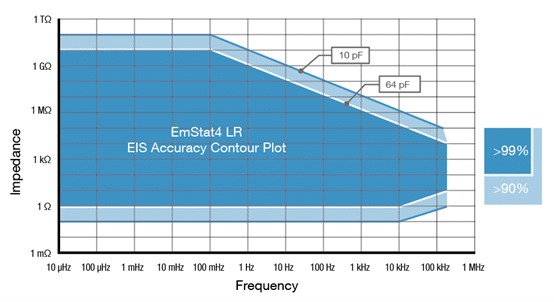 |
| EmStat4M HR EIS Accuracy Contour Plot |
|---|
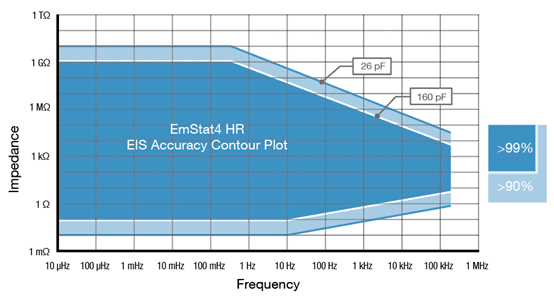 |
Software
PSTrace
PSTrace for Windows provides support for all techniques and device functionalities. With a smooth simple interface, showing only the applicable controls, PSTrace is suitable for all levels of user experience. Functions include:
- Direct validation of method parameters
- Equivalent Circuit Fitting
- Automated peak search
- Scripting for running an automated sequence of measurements
- Open data in Origin and Excel with one click of a button
- Load data from EmStat4 internal storage
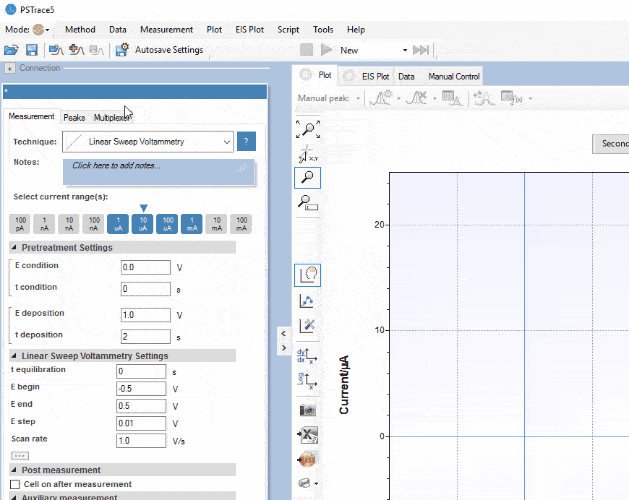
Software Development Kits
The PalmSens Software Development Kits (SDKs) for .NET can be used with any of our instruments or OEM potentiostat modules to develop your own software. The SDK’s come with a set of examples that shows how to use the libraries.
PalmSens SDKs with examples are available for the following .NET Frameworks:
- WinForms
- WPF
- Xamarin (for Android)
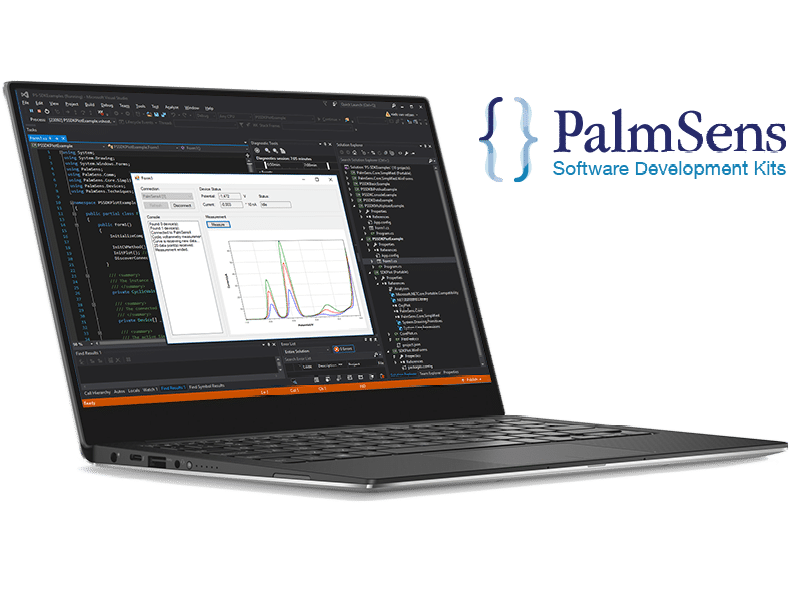
MethodSCRIPT™ communications protocol
The EmStat4 potentiostat module has an on-board parser for the MethodSCRIPT™ scripting language. This language allows developers to program a human-readable script for the EmStat4 module on any platform or operating system. The simple script language allows for running electrochemical techniques supported by EmStat4 and makes it easy to combine different measurements and other tasks.
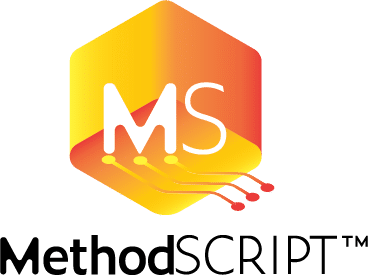
Downloads
Software (8)
| Name | Last updated | |
|---|---|---|
| EmStat4 Firmware v1.3.4 See app note "EmStat Pico firmware updating" for more information about updating built-in and bare EmStat4M modules. | 25-03-24 | |
| EmStat4 Firmware v1.2.3 See app note "EmStat Pico firmware updating" for more information about updating built-in and bare EmStat4M modules. | 08-02-23 | |
| PalmSens SDK for Python PalmSens Python SDK 5.9 with support for PalmSens instruments. | 07-11-22 | |
|
MethodSCRIPT code examples
MethodSCRIPT code examples include:
- MethodSCRIPTExample_C - MethodSCRIPTExample_C_Linux - MethodSCRIPTExample_C# - MethodSCRIPTExample_Arduino - MethodSCRIPTExample_Python - MethodSCRIPTExample_iOS - MethodSCRIPTExample_Android Every code example comes with a "Getting Started" document. |
07-07-22 | |
| PSTrace PC software for all single channel instruments PSTrace software is shipped as standard with all single channel and multiplexed instruments. The software provides support for all techniques and device functionalities. | 17-03-22 | |
| Getting started with PalmSens SDK for WPF This manual explains how to use the SDK with the included libraries and examples. | 07-06-21 | |
| Getting started with PalmSens SDK for WinForms This manual explains how to use the SDK with the included libraries and examples. | 07-06-21 | |
| Getting started with PalmSens SDK for Android This manual explains how to use the SDK with the included libraries and examples. | 07-06-21 |
Documentation (10)
| Name | Last updated | |
|---|---|---|
| MethodSCRIPT v1.5 The MethodSCRIPT scripting language is designed to improve the flexibility of the PalmSens potentiostat and galvanostat devices for OEM users. It allows users to start measurements with arguments that are similar to the arguments in PSTrace. PalmSens provides libraries and examples for handling low level communication and generating scripts for MethodSCRIPT devices such as the EmStat Pico and EmStat4. | 25-03-24 | |
| EmStat4M Communication Protocol V1.3 Describes how to communicate with the EmStat4M directly and how to send MethodSCRIPTS. | 25-03-24 | |
| EmStat4M Brochure EmStat4M Brochure including main specifications and practical limitations. | 28-02-24 | |
| Entering the Bootloader This document explains how to enter the bootloader of the EmStat Pico or the EmStat4M and update the firmware. | 05-10-23 | |
| EmStat4M Communication Protocol V1.2 Describes how to communicate with the EmStat4M directly and how to send MethodSCRIPTS. | 01-02-23 | |
| MethodSCRIPT v1.4 The MethodSCRIPT scripting language is designed to improve the flexibility of the PalmSens potentiostat and galvanostat devices for OEM users. It allows users to start measurements with arguments that are similar to the arguments in PSTrace. PalmSens provides libraries and examples for handling low level communication and generating scripts for MethodSCRIPT devices such as the EmStat Pico and EmStat4. | 01-02-23 | |
| EmStat4M Connection Card This connection card provides an overview of the connector pin-outs. | 14-03-22 | |
| MethodSCRIPT v1.3 The MethodSCRIPT scripting language is designed to improve the flexibility of the PalmSens potentiostat and galvanostat devices for OEM users. It allows users to start measurements with arguments that are similar to the arguments in PSTrace. PalmSens provides libraries and examples for handling low level communication and generating scripts for MethodSCRIPT devices such as the EmStat Pico and EmStat4. | 19-01-22 | |
| EmStat4M Communication Protocol V1.0 Describes how to communicate with the EmStat4M directly and how to send MethodSCRIPTS. | 14-10-21 | |
| MethodSCRIPT v1.2 MethodSCRIPT v1.2 protocol description | 28-04-20 |
Datasheet (1)
| Name | Last updated | |
|---|---|---|
| EmStat4M Datasheet Document with more detailed specifications including module pin-out. | 30-11-23 |
Application Note (1)
| Name | Last updated | |
|---|---|---|
| Migrating to the EmStat4M LR or HR This Application note shows the differences between our older and latest EmStat modules which are relevant when switching your software and electronics design to work with the EmStat4 LR or HR. | 06-10-22 |
Other (1)
| Name | Last updated | |
|---|---|---|
| EmStat4M Altium symbol and footprint The ZIP file contains an Altium library with EmStat4M footprint and symbol | 19-10-21 |

















